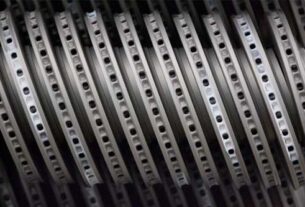Advanced ceramics have revolutionized various industries, delivering exceptional performance in demanding applications. At the forefront of this innovation is samarium oxide, a remarkable compound that contributes significantly to the enhanced properties of ceramics. In this comprehensive article, we explore deep into the various roles of samarium oxide in advanced ceramic applications. From understanding its chemical characteristics to exploring its diverse uses across industries, let’s uncover how this compound shapes the future of ceramics.
Introduction to Samarium Oxide: Enhancing Ceramics for Excellence
Samarium oxide, with the chemical formula Sm2O3, is a rare-earth compound known for its unique properties. This compound exhibits excellent thermal stability, high melting point, and remarkable electrical conductivity. These characteristics make samarium oxide a sought-after additive in advanced ceramic formulations. By seamlessly integrating into ceramic matrices, samarium oxide imparts its specific properties, elevating the overall performance of ceramics.
The Chemistry Behind Samarium Oxide’s Success
Samarium oxide owes its exceptional properties to its complex atomic structure. With carefully arranged samarium atoms, this compound offers high ionic conductivity, which is crucial for applications involving high temperatures and electrical fields. The crystal lattice of samarium oxide enables efficient ion migration, making it an ideal candidate for solid oxide fuel cells, oxygen sensors, and other high-temperature devices.
Unveiling Applications: Samarium Oxide’s Versatility Unleashed
Catalysis and Chemical Processes
Samarium oxide plays a vital role in catalytic converters, transforming harmful exhaust gases into less harmful substances through redox reactions. Its oxygen storage capacity and catalytic efficiency make it indispensable for reducing emissions and ensuring cleaner air.
Solid Oxide Fuel Cells (SOFCs)
In the radius of sustainable energy, samarium oxide shines bright. It serves as an electrolyte in solid oxide fuel cells, enabling the conversion of chemical energy to electricity with high efficiency. This application holds promise for cleaner and more efficient power generation.
Optoelectronics and Luminescence
The luminescent properties of samarium oxide find applications in optoelectronic devices. Its ability to emit intense red light when stimulated makes it valuable in fluorescent materials and LED phosphors, enhancing the vividness of displays and lighting systems.
Electronics and Dielectric Materials
Samarium oxide’s high dielectric constant and low loss tangent make it an excellent candidate for electronic components and insulating materials. Its incorporation enhances the performance of capacitors, resonators, and other devices in communication and electronic systems.
Nuclear Reactors and Neutron Absorption
Due to its strong neutron absorption capacity, samarium oxide acts as a control material in nuclear reactors. It absorbs excess neutrons, preventing reactor core meltdowns and ensuring the safety of nuclear power plants.
Biomedical Applications
Samarium oxide nanoparticles show potential in targeted drug delivery and cancer treatment. Researchers are exploring its use in therapeutics, leveraging its unique properties to advance medical science.
FAQs about Samarium Oxide in Advanced Ceramic Applications
Q: Is samarium oxide a naturally occurring compound?
A: Yes, samarium oxide can be found in various minerals, including monazite and bastnäsite.
Q: What gives samarium oxide its impressive catalytic properties?
A: Samarium oxide’s ability to switch between different oxidation states during chemical reactions contributes to its catalytic properties.
Q: Are there any environmental concerns related to samarium oxide?
A: While samarium oxide itself is not toxic, its extraction and processing can have environmental implications if not managed properly.
Q: How does samarium oxide enhance the performance of solid oxide fuel cells?
A: Samarium oxide’s ionic conductivity facilitates the movement of oxygen ions, enabling efficient electrochemical reactions within SOFCs.(Solid oxide fuel cell ).
Q: Can samarium oxide-based materials be used in consumer electronics?
A: Absolutely, samarium oxide’s dielectric properties make it suitable for various electronic components in consumer devices.
Q: What ongoing research is being conducted on samarium oxide?
A: Researchers are exploring samarium oxide’s potential in areas such as advanced ceramics, electronics, and medical applications.
Conclusion:
In the world of advanced ceramics, samarium oxide stands as a true game-changer. Its versatility, coupled with its remarkable properties, propels ceramics into a new world of possibility. From clean energy to biomedical breakthroughs, the role of samarium oxide in shaping modern technology cannot be overstated. As industries continue to harness its potential, we anticipate even more innovative applications on the horizon.
So there you have it—the exciting journey through the diverse applications of samarium oxide in advanced ceramics. This compound not only enhances the material properties but also opens doors to a future where ceramics play a vital role in sustainable energy, electronics, and medicine. As the demand for high-performance materials grows, samarium oxide remains a shining beam of innovation, guiding us toward a brighter and more advanced future.
Visit:

James Oliver is a professional blogger and a seasoned Content writer for technologyspell.com. With a passion for simplifying technology and digital topics, he provides valuable insights to a diverse online audience. With four years of experience, James has polished his skills as a professional blogger.




